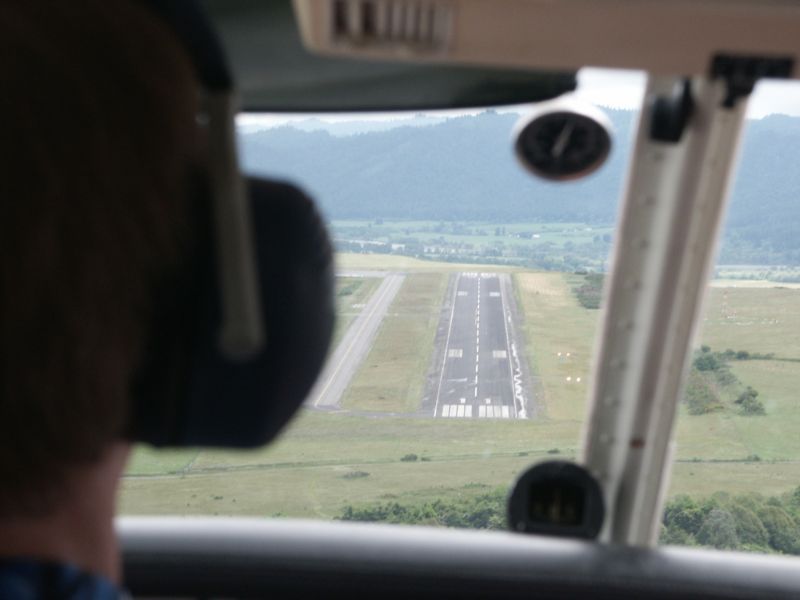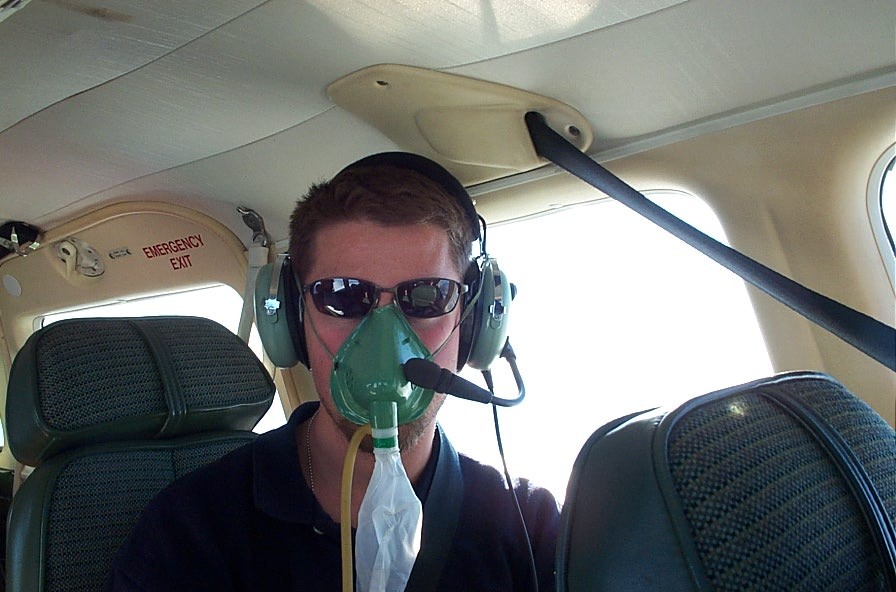Multi-engine Flight Excursions
Goals and Purpose
This program grew out of the desire to provide effective extended cross-country training and practice to individuals for whom such flights are operationally and financially impractical. By sharing the pilot seat (and the costs) with other pilots, you are able to travel further and experience the greater variety in airspace, geography and weather associated with extended flights. Of course, in a less practical light, extended cross-country flights are simply challenging and a lot of fun. With the technical assistance and support of a Langley Flying School Instructor sitting in the right seat, the pilot “on shift” in the left seat will have effective operational control of the flight, including piloting, navigation, and communications with ATS. The program is also designed for individuals without previous piloting experience. Supervision and assistance provided to such persons by the Instructor will, of course, be more extensive. If such individuals wish simply to enjoy the view and the experience of travelling in a light aircraft, this can be facilitated as well

The Aircraft
For the flight excursions Langley Flying School uses its Piper Seneca which can carry six persons (including the Instructor) at cruising speeds between 150-165 knots, and at altitudes as high as 20,000’. The navigation equipment on the aircraft is state-of-the art, including an IFR certified GPS with moving map, slaved Horizontal Situation Indicator and Radio Magnetic Indicator. The aircraft is also equipped with a two-axis Autopilot (altitude and heading), Turbochargers and Oxygen. Owing to this equipment, this program can meet and satisfy a variety of pilot backgrounds and flying experience.
Flight Booking Procedures--Getting “Posted”
Once you have decided on your destination, contact the School so that you can get “posted”. Your name will go on the excursions schedule and you will be matched with other individuals who have selected the same destination. Once you are posted, we will do the rest of the work with respect to flight organization. Post you name as early as possible so that others with similar interests can be co-ordinated well in advance. If you wish to participate in a flight to San Diego, for example, we will ask you the suitable flying date and the amount of flying you wish to do
during the trip. If you were to request a three-person flight crew (providing you with approximately 5.3 hours flying time) we would attempt to match you with two others who have posted for the same trip. Your posting will also draw others with a similar interest to match your flying date. In the case of the San Diego trip, if we are short two other individuals, we will organize and present to you options—e.g., posting your name on a similar three-person flight where two others are posted, changing the crew size (from a three-person crew to a two-person crew, for example. If the postings cannot be matched up, your name can be posted on a later flight. In summary, once you are posted, it is our job to create the appropriate match. It is advantageous for you and your flying friends to contact us as a group; you can then forego the need to match pilots, and we can also customize the flight to meet the needs of your group.
Flight Organization
The Instructor will meet with flight crew members individually or as a group approximately three weeks in advance of the flying date. The meetings will facilitate route planning and the determination of flying responsibilities for the various legs that compose the trip. For the longer flights, all routings must be along published airways and cruising altitudes must conform with the published altitudes for the route. Many of the longer flights depart on Friday afternoon and in such cases a good portion of the flight to the destination will be made at night; the use of published airways during night flying provides both safety and ease of navigation (the work-load is tremendously reduced using IFR En Route Charts on long-distance flights). In the case of first-time flyers, the Instructor will prepare the navigation and flight planning. Langley Flying School will provide all en route, terminal and airport charts for the flight. Crew members are encouraged to purchase their own VNC or WAC charts for additional routing and navigation information. Each leg will vary in length, but will typically last between 1.5 and 2.5 hours. At the completion of a leg, the flight planning for the next leg will be reviewed—hopefully over a coffee at an airport restaurant. A weather briefing with Flight Service must be conducted before every departure, including a review of NOTAMS and SIGMETS (and the US equivalent) for the route and destination. Crew members not on shift rotate in the rear seats, but are
encouraged to monitor navigation, ATC clearance communication, and weather. The Instructor remains the Pilot-in-Command throughout the training flight, although the pilot “on duty” is allocated much, if not all, of the flight responsibilities and decision-making within the context of the student-instructor relationship.
An Alternate Return Plan
Safety is of course the highest priority during the flights, and one of the main hazards to safety is weather. In dealing with hazardous weather, the key is flexibility, and it is for this reason that all members of the crew must be prepared to execute an alternate plan for returning home in the event the flight is held up for bad weather. In the worst case, all members must be prepared to deal with the scenario of being stuck at some lonely airport somewhere along the route owing to bad weather—whether it be for only a few-hours’ delay, or in extreme cases, a few-days’ delay. Because the flying days associated with a trip are so close together (over only three days in the case of the longer routes), we should have reasonable success in predicting the influence of major weather systems and, in the event of bad weather, the departure day can be deferred or the trip cancelled as a precautionary measure. As any pilot knows, however, this provides little assurance that a weather delay will not be encountered. It is therefore a “must” that all members of the group be prepared to make an alternate plan for returning home independently, whether it be by bus, rented car, or by scheduled airline. In the event that the aircraft is grounded at an en route airport owing to a weather day and crew members are required to make their own way home, there will of course be no charge for the School’s cost of returning the aircraft to Langley when the weather clears. Obviously these rules also apply to grounding owing to mechanical problems which all pilots must be ready for as well.

Free Seats
With the exception of four-person flight crews, there is at least one seat on board the Seneca which can be filled by a friend or family member. With one-person flights there are three “free” seats and with two-person flights there are two “free” seats, etc. Weight and fuel restrictions require that one seat be left vacant on most of the flights. The number of free seats desired should be included in the initial posting information.
Training Material
Langley Flying School has a number of training publications that can be provided at minimal cost to crew members in advance of the flying date, and members are encouraged to at least review the Seneca Pilot Checklist, and the Pilot Operating Handbook for the Seneca in advance of the flight. Also recommended is the Langley Flying School’s Multi-engine Flight Training Handbook, which contains lots of good-to-know information regarding Seneca operations, and also our Standard Operating Procedures used in our multi-crew training program. There is also Langley Flying School’s Aircraft Systems and Performance Examination for the Seneca, which can be provided in advance as useful study material. Of course, Instructors are available prior to the departure to provide advice and consultation, and there is no charge for this service. With respect to systems, we also have available the GPS (KLN 94) Operating Handbook, and the Autopilot Handbook.
Fees, Expenses and Other Costs
Individuals are charged for their portion of the trip at which they are sitting in the pilot seat—specifically, air time for the leg plus .2 hours (twelve minutes). Individuals are also charged for their share of the Instructor expenses costs ($100 per day), as well as their share of any landing fees incurred. As an example, let us say that an individual joins a crew of four students for a two day trip to San Francisco, where a landing fee of $20 is incurred; the total flight time for the trip (to San Francisco and return to Langley) was 16 hours. With a four-student crew, each student would fly approximately 4 hours, and the costs would be similar to the following:
|
Item |
Cost Per Student |
|
Aircraft Costs (¼ of 16 hours @ $300 per hour) |
$1200 |
|
Instructor Expenses (¼ of $200) |
$50 |
|
Landing Fee at San Francisco International (¼ of $100) |
$25 |
|
Shared Accommodation (¼ of cost) |
$40 |
|
Total |
$1315 |
All flight schools in British Columbia providing both Private Pilot and Commercial Pilot flight training are required by law to charge the Harmonized Sales Tax, and the HST (12%) is therefore applicable to all training. Visa, MasterCard, American Express, and Debit Cards are accepted. Individual members will also be responsible for all personal trip expenses during travel, and at the destination; this would include for example, hotel and meals, etc.
First-time Flyers?
For those of you who are first-time flyers, it is important you understand that you will not have to worry about any perceived intricacies and complexities of flying an aircraft—you will be sitting next to an instructor who makes a living from teaching people how to fly. During the course of the flight you will be introduced to, and fully experience, the art of flying, and you will quickly learn how easy it is to fly (but you will be sworn to secrecy so as not to tell others—we pilots like to tell others that it is really tough and difficult!). Safety will of course be paramount while you are in the pilot seat, with the initial tasks assigned to you being to fly the aircraft straight and level at cruising altitude, to keep an eye out for other aircraft, and of course to enjoy the tremendous front-seat view of the ever-changing landscape and skyscape. As your level of experience progresses during the trip you will become increasingly skilled at climbing, descending, Air Traffic Control communications and other cockpit procedures. You will be closely supervised throughout the flight, with the Instructor taking control of the aircraft during more intricate phases of the flight, such as landings and takeoffs. Incidentally, it is common for first flyers to become comfortable with controlling the aircraft after only twenty minutes of flying, and it is virtually inevitable that you will want to learn to fly after the trip. You are encouraged to meet with the Instructor well in advance of the departure day to review on the ground the fundamentals of aircraft control, and an advance training flight in single-engine aircraft to allow you to get familiar with the cockpit environment can be easily arranged.
Further Information
For further information regarding this program, please contact our school CFI.
.jpg)

